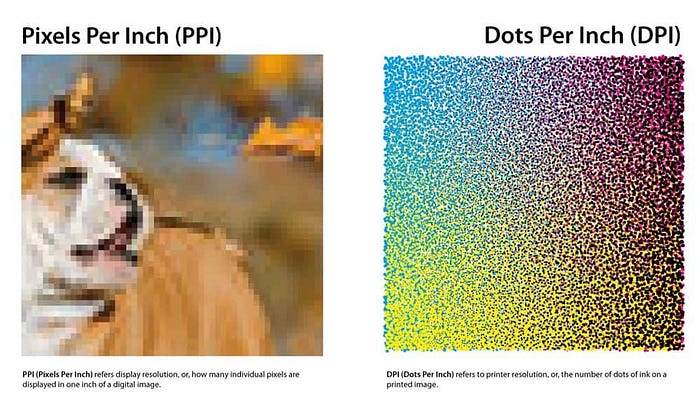
Member-only story
DPI VS PPI — What’s the Difference? Online & Print Resolution Explained
A pixel is nothing but just a DOT.
The term ‘Pixel” has come from the words “picture” and “element”, and this which is the smallest unit measures the digital image.
The number of pixels makes a high-resolution picture, and the low number of pixels make little quality pictures.
The number of pixels in a grid determines the resolution on your screen. Pixels usually are situated in a 2-dimensional grid.
A pixel is a photographic theory has a history, Frederic. C. Billingsley, an American engineer in 1965, came up with the ideology of pixels by being the first to publish a picture element in two papers.
Though DPI vs PPI both are terms for describing the resolution of images, no, they are not the same thing.
DPI is dots per inch, which represents physical dost of ink to be printed on paper for that image whereas PPI is pixels per inch, which describes the number of square pixels in a digital screen.
Understanding some details about how a picture is utilised, how they are availed, how they are engraved can make a vast, impressive difference in the proportion of document, web pages, emails, etc.
PPI (Pixels Per Inch)

Let us understand what does PPI stand for.
PPI is the sum of pixels per inch for your picture.
The quality of the output and print size of your image will be strongly affected by this.
So when there are two fewer pixels per inch, then the pixels will be huge, and you will get a very pixelated image, this is how it will affect the output quality.
It seems rudimentary, but for many, the real confusion of DPI vs PPI starts here.
For an acceptable PPI for a print out of your image, there are a few different kinds of numbers put around. A lot depends on the fact that the size of the print is small or big.
